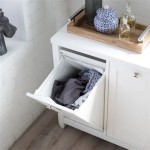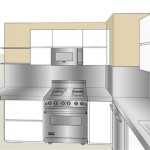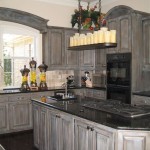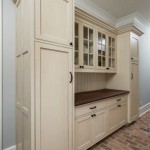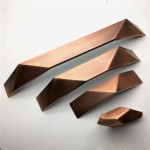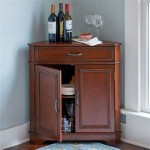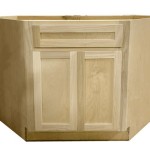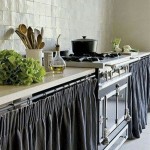Do You Need To Prime Kitchen Cabinets Before Painting?
Painting kitchen cabinets is a popular and cost-effective way to refresh a kitchen's aesthetic without undergoing a full renovation. The longevity and quality of the paint job, however, hinges significantly on proper preparation. A crucial element of this preparation is the application of primer. The question of whether to prime kitchen cabinets before painting is not always a simple yes or no. Understanding the purpose of primer, the types of cabinet materials involved, and the desired outcome will determine whether this step is necessary and which type of primer is most suitable.
Primer acts as an intermediary layer between the cabinet surface and the paint. It is designed to adhere strongly to the underlying material and provide a consistent, receptive surface for the paint to grip. Skipping primer can lead to a number of problems, including poor paint adhesion, uneven color distribution, and the early breakdown of the painted finish. While there are situations where priming is less critical, generally, it is a worthwhile investment of time and resources to ensure a professional and durable result.
Understanding the Purpose of Primer
Primer serves several key functions in the painting process. First and foremost, it enhances adhesion. Many cabinet surfaces, such as laminate or glossy finishes, are inherently difficult for paint to adhere to. Primer contains binding agents that create a stronger bond between the cabinet and the paint, preventing peeling, chipping, and blistering over time. Without primer, the paint may simply sit on the surface, making it vulnerable to damage from everyday use and cleaning.
Secondly, primer seals porous surfaces. Wood cabinets, in particular, can be quite porous, absorbing paint unevenly. This can result in variations in color and sheen across the finished surface, requiring multiple coats of paint to achieve a uniform look. Primer fills the pores in the wood, creating a smooth, even surface that minimizes paint absorption and ensures a consistent color and sheen.
Thirdly, primer blocks stains and tannins. Wood cabinets, especially those made of oak or cherry, can leach tannins, natural compounds that can bleed through the paint and discolor the finish. Similarly, existing stains, grease, or water damage can also bleed through the paint, ruining the overall appearance. Primer acts as a barrier, preventing these substances from migrating to the surface and affecting the color and integrity of the paint.
Finally, primer can improve the paint's coverage. By creating a uniform base color, primer reduces the number of coats of paint needed to achieve the desired opacity. This not only saves time and money on paint but also contributes to a smoother, more professional-looking finish. Using fewer coats of paint minimizes the risk of brushstrokes or roller marks showing through and reduces the overall thickness of the paint layer, which can help prevent chipping and cracking.
Factors Influencing the Need for Primer
Several factors influence the decision of whether or not to prime kitchen cabinets before painting. The type of cabinet material is a primary consideration. Solid wood cabinets, especially those with open grains like oak or ash, almost always benefit from priming due to their porosity and potential for tannin bleed. Laminate cabinets, while less porous, often have a glossy finish that makes it difficult for paint to adhere. Priming can improve adhesion significantly in these cases.
Melamine cabinets, which are typically covered with a paper-like coating, may not always require priming, especially if the surface is in good condition and the paint is specifically designed for melamine. However, if the melamine surface is damaged or peeling, priming is recommended to create a stable base for the paint. Thermofoil cabinets, which are covered with a thin layer of vinyl, can be particularly challenging to paint. Priming is essential to ensure proper adhesion and prevent the vinyl from peeling or blistering.
The existing condition of the cabinets is another important factor. If the cabinets are already painted and the existing paint is in good condition, with no peeling, chipping, or cracking, it may be possible to skip priming. However, it is still advisable to lightly sand the surface to create a better bond for the new paint. If the existing paint is damaged or the cabinets have been previously stained or varnished, priming is highly recommended to create a uniform and stable base.
The type of paint being used also plays a role. Some paints are formulated with self-priming properties, meaning they claim to provide both adhesion and coverage in a single coat. While these paints can be convenient, they may not always provide the same level of performance as a separate primer, especially on challenging surfaces. For best results, it is generally recommended to use a dedicated primer, even when using a self-priming paint.
Finally, the desired outcome should be considered. If the goal is simply to freshen up the cabinets with a new coat of paint and the existing finish is in good condition, skipping primer may be acceptable. However, if the goal is to achieve a professional, long-lasting finish that will withstand years of use, priming is a crucial step. Paying attention to the details during preparation will ensure a better outcome and a more satisfying result.
Choosing the Right Primer for Kitchen Cabinets
Selecting the appropriate primer is crucial for achieving optimal results when painting kitchen cabinets. There are several types of primers available, each with its own strengths and weaknesses. The best choice will depend on the type of cabinet material, the existing condition of the cabinets, and the desired outcome.
Oil-based primers are known for their excellent adhesion and sealing properties. They are particularly effective at blocking stains and tannins and are a good choice for wood cabinets that have been previously stained or varnished. Oil-based primers create a hard, durable surface that is ideal for resisting moisture and wear. However, they have a strong odor, require mineral spirits for cleanup, and can take longer to dry than other types of primers. Due to VOC regulations, oil-based primers are becoming less common in some areas.
Latex primers are water-based and are generally considered to be more environmentally friendly than oil-based primers. They have low VOCs, are easy to clean up with soap and water, and dry relatively quickly. Latex primers are a good choice for priming previously painted cabinets or for cabinets made of materials like MDF or laminate. They offer good adhesion and provide a smooth base for the paint. However, they may not be as effective at blocking stains and tannins as oil-based primers.
Shellac-based primers are known for their excellent stain-blocking properties and their ability to adhere to a wide variety of surfaces. They are a good choice for cabinets that have been exposed to water damage or have significant stains. Shellac-based primers dry very quickly and create a hard, durable surface. However, they have a strong odor and require denatured alcohol for cleanup. They can also be brittle and prone to cracking if applied too thickly.
Specialty primers are available for specific types of cabinet materials, such as melamine or thermofoil. These primers are formulated to adhere to these challenging surfaces and provide a stable base for the paint. They often contain bonding agents that create a strong bond between the primer and the cabinet material. Using a specialty primer can significantly improve the adhesion and durability of the paint finish.
When choosing a primer, it is also important to consider the color of the paint that will be applied. Tinting the primer to a similar color as the paint can improve the paint's coverage and reduce the number of coats needed. This is particularly helpful when painting cabinets a light color over a dark surface. Consult with a paint professional to determine the best primer for the specific project and the desired outcome. Always follow the manufacturer's instructions for application and drying times to ensure optimal results.
In conclusion, the decision of whether to prime kitchen cabinets before painting is a critical one that can significantly impact the final outcome. By understanding the purpose of primer, the types of cabinet materials involved, and the available primer options, one can make an informed decision that will lead to a beautiful and long-lasting paint finish. Taking the time to properly prepare the cabinets, including priming, is an investment that will pay off in the form of a professional-looking kitchen that will be enjoyed for years to come.

Refinish Kitchen Cabinets With Kilz Restoration Primer

What You Need To Know Before Painting Cabinets The Palette Muse

How To Prime Cabinets For A Smooth Finish The Turquoise Home

Tips Tricks For Painting Oak Cabinets Evolution Of Style

How To Paint Kitchen Cabinets A Step By Guide Confessions Of Serial Do It Yourselfer

How To Paint Kitchen Cabinets A Step By Guide Confessions Of Serial Do It Yourselfer

How To Prime Cabinets For A Smooth Finish The Turquoise Home

Painting Kitchen Cabinets Without Primer

How To Clean Prep Wood Kitchen Cabinets Before Painting Do Dodson Designs

How To Paint Kitchen Cabinets A Step By Guide Confessions Of Serial Do It Yourselfer
Related Posts

